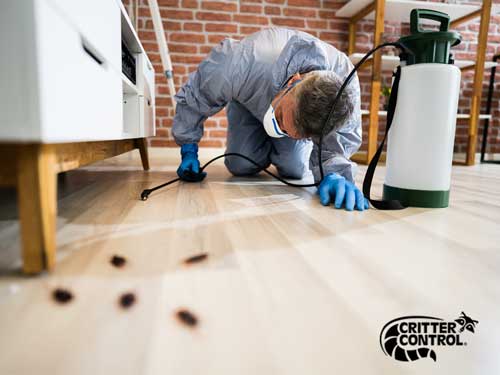Bed Bug Therapy Failure: Comparing Chemical Vs. Non-Chemical Solutions
In the realm of bug control, specifically when handling the consistent issue of bed pests, the option in between chemical and non-chemical treatment remedies can be an essential one. Both approaches provide unique advantages and downsides, influencing factors such as efficiency, safety and security considerations, and general expense. By analyzing the nuanced information of each method, a more clear understanding of which path to pursue in addressing a bed pest problem can be attained.
Effectiveness of Chemical Therapies
Chemical treatments for bed bug problems have actually been extensively identified for their rapid and powerful efficacy in removing these pests. When considering the effectiveness of chemical therapies, it is vital to understand that they can give a fast and extensive option to a bed insect issue.
Additionally, chemical therapies have the benefit of providing residual results, implying that they can remain to remove bed pests also after the first application. This recurring action is especially valuable in combating any type of possible re-infestations. Additionally, the rapid action of chemical therapies can bring alleviation to people encountering severe bed bug problems, permitting them to restore control of their home quickly.
Safety Interest In Chemical Solutions
One important element that needs careful consideration when utilizing chemical remedies for bed bug treatment is making certain the security of owners and the environment. Direct exposure to particular chemicals used in bed bug therapies can lead to respiratory system concerns, skin irritability, or other adverse responses, especially in individuals with pre-existing problems or level of sensitivities.
In addition, the environmental impact of chemical options is an additional substantial factor to consider. Some pesticides utilized in bed bug treatments may be harmful to useful pests, wildlife, and ecosystems if they seep right into the soil or water systems. It is important to make use of chemical treatments sensibly, following safety standards, and considering less poisonous choices to reduce these dangers and guarantee the efficient and risk-free monitoring of bed bug invasions.
Benefits of Non-Chemical Techniques
Thinking about the prospective safety problems and ecological effect related to chemical solutions for bed insect therapy, exploring non-chemical strategies presents a promising option with several unique advantages. Non-chemical approaches use a much safer choice for homes, especially those with children, pet dogs, or individuals conscious extreme chemicals. These techniques get rid of the dangers of exposure to harmful compounds, minimizing the possibility for adverse wellness effects. Moreover, non-chemical treatments are eco-friendly, as they do not add to air or water air pollution, making them a sustainable selection for insect control.
Additionally, non-chemical solutions can be effective in targeting bed bugs, including hard-to-reach areas where chemical treatments might not pass through - A1 charlotte bed bug exterminator. Methods such as heat therapy, vacuuming, heavy steam cleaning, and cushion encasements offer complete eradication without the usage of harmful chemicals.
Limitations of Non-Chemical Treatments

Additionally, non-chemical treatments typically require numerous go to these guys applications to achieve effective removal. This can be time-consuming and may not constantly assure total removal of all bed bugs and their eggs, especially in surprise or hard-to-reach locations.
Furthermore, the success of non-chemical treatments greatly relies on appropriate implementation and thoroughness, which can be testing for individuals without expert expertise. Poor application of non-chemical approaches may cause incomplete removal, resulting in persistent infestations and the need for additional treatments.
Consequently, while non-chemical treatments have their advantages, it is necessary to recognize these restrictions and consider them when identifying the most effective strategy for handling bed insect problems.
Price Contrast: Chemical Vs. Non-Chemical Options
Offered the constraints related to non-chemical therapies, a crucial element to review in the context of bed insect monitoring is the price comparison in between chemical and non-chemical alternatives. Chemical therapies generally involve the application of pesticides by professionals, which can vary from $250 to $900 per area, relying on the intensity of the invasion and the size try here of the area to be treated. In contrast, non-chemical treatments like warm treatment or heavy steam can be a lot more expensive, with costs varying from $1,000 to $6,000 for an entire home. While the first cost of chemical treatments may seem lower, several therapies may be needed to completely eliminate the infestation, potentially increasing the overall expense. On the other hand, non-chemical options may give a more environmentally friendly and sustainable service, although they can be cost-prohibitive for some people. Eventually, when considering the cost of bed bug treatment options, it is necessary to consider the upfront expenses against the performance and long-lasting sustainability of the chosen method.
Conclusion

Thinking about the prospective safety concerns and ecological impact connected with chemical remedies for bed bug therapy, discovering non-chemical approaches provides a promising alternative with several distinctive advantages.Provided the constraints linked with non-chemical therapies, an important element to review in the context of bed insect management is the expense comparison in between chemical and non-chemical alternatives. In contrast, non-chemical treatments like warmth treatment or heavy steam can be extra pricey, with expenses varying from $1,000 to $6,000 for a whole home. While the preliminary cost of chemical therapies may seem reduced, multiple therapies may be needed to totally eliminate the problem, potentially increasing the general cost.In conclusion, when comparing chemical navigate to these guys and non-chemical bed bug treatment options, it is crucial to take into consideration performance, safety and security, advantages, restrictions, and cost.
Comments on “High Quality A1 Pest Control Services Charlotte - Protect Your Home”